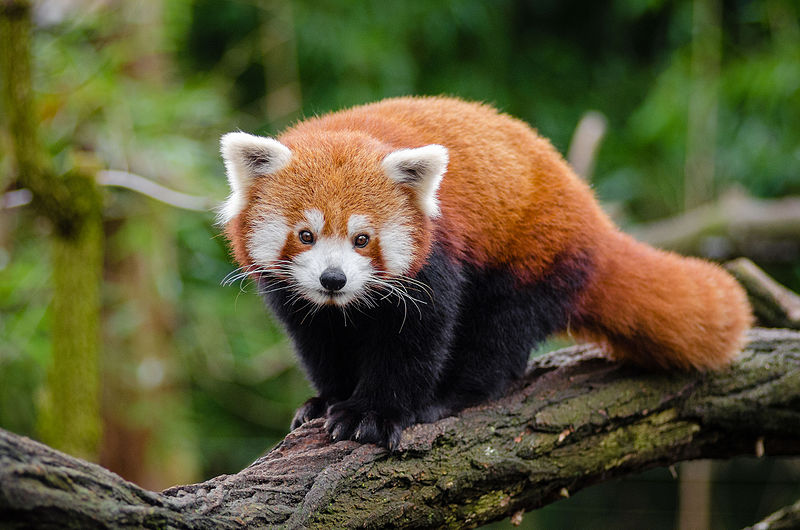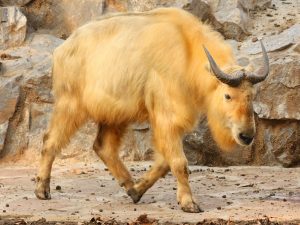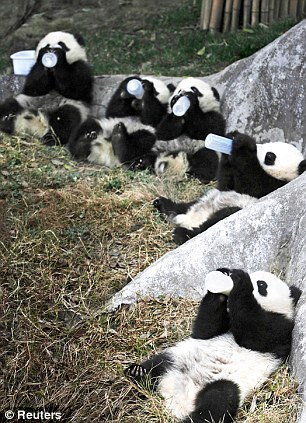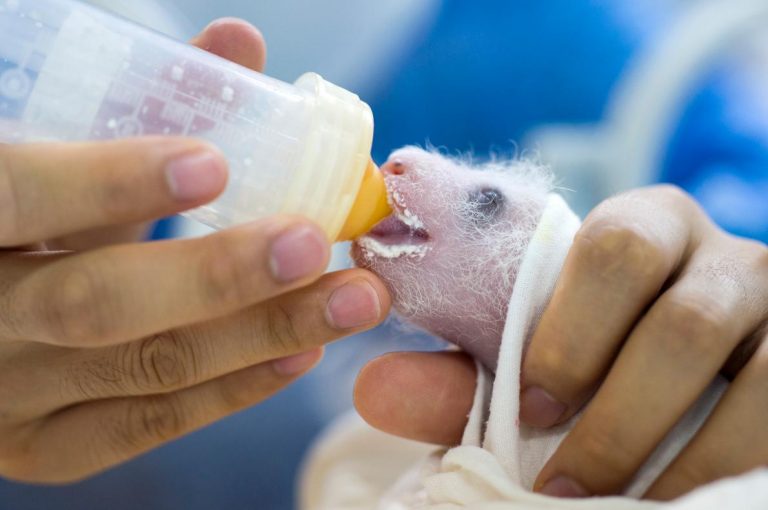How Giant Panda Conservation Efforts Save Other Animals
Giant Panda Conservation efforts don’t benefit just about one species alone as new research shows.

It was also a lot to cheer about when the IUCN officially downgraded the panda bear from Endangered to Vulnerable in 2016.
Quick intervention and combined conservation efforts within and outside China quickly rescued the giant panda (Ailuropoda Melanoleuca) from the brink of extinction.
This creature remains at the forefront of animal conservation and is a symbol of what cooperation can achieve.
Even so, to date many wonder what all the fuss about this particular animal is. They fail to realize that these efforts are not about just one animal. The giant panda is not just a cuddly-looking and cute with more viral videos than almost any other animal alive today.
As a matter of fact, these bears have received so much attention and care that they have become an “umbrella species” to other unique animal species in their native China. That’s because in the process of preserving the Giant Panda’s habitat, many other unique animals in the same ecosystem will benefit.
Here are just a few animals benefiting from giant panda conservation efforts:
5 Animals Benefiting From Giant Panda Conservation Efforts.
1) The Red Panda

Though the Red Panda is distributed through parts of the Eastern Himalayas, it shares a large part of the giant panda’s habitat.
This beautiful, little creature is slightly bigger than the average domestic cat and is easily recognized by its thick red/russet colored fur, a long and very bushy tail, and a bear-like body.
There are presently under 10,000 individuals of this species roaming in the wild today. The red panda is an endangered and protected species and it was hunted in the past its unique and beautiful fur.
2) The Asiatic Black Bear

This bear is easily the most poached and exploited bear on our planet today. The Asiatic, or Asian, black bear is closely related to the American Black Bear. However, its numbers are declining sharply unlike other black bears.
Poaching, bear bile farming, loss of habitats to deforestation, and continuous harvesting of its parts for use in alternative medicines put this bear under immense pressure. Actually, the Asian black bear remains the most sought bear for use by alternative medicine practitioners.
Asiatic black bears are classified as Vulnerable by the IUCN.
3) Golden Snub-Nosed Monkey

This is an old world monkey and a Chinese endemic specie. They’re also commonly called the Sichuan golden hair monkey.
Just like the Giant Panda, their conservation status is precarious: in fact, the Golden snub-nosed monkey is rated as critically endangered and protected under Chinese Law.
The IUCN lists it as Endangered.
Present total population is somewhere between 8,000 and 15,000 individuals.
4) The Snow Leopard

China alone accounts for about 60 percent of the world’s population of snow leopards.
These leopards are large and elusive, typically native to the mountains of South and Central Asia. They are skilled predators with teeth designed for a quick kill. Human intrusion into their historic territory is forcing them to find alternative prey in place of the wild goats and sheep they usually prey on.
5) The Takin

The Takin is another national treasure in China just like the giant panda in China. This creature is a goat-antelope native to the eastern Himalayas. It’s also known as a cattle chamois or gnu goat and the roam widely range across the panda’s home in Sichuan province.
Takins are Endangered and a protected species as people hunt them for their meat and pelts.
Takins are fond of licking salt so hunters use salt to tempt and trap them.
Surprising Discoveries In Panda Research
A paper published in the Biological Conservation proves that pandas are officially an umbrella species. The research was conducted by Stuart L. Pimm, (the paper’s senior author) and Binbin Li both from the Nicholas School of the Environment, Duke University.
Their research shows that 70 percent of China’s forest mammals, birds, and 31 percent of native forest amphibians live in the giant panda’s geographic range. That range includes the nature reserves set aside to protect panda bears.
Note that the majority of these animals are species that are exclusive to China and exist nowhere else on Earth.
Thus, the researchers were surprised and delighted to see just how much other forest species benefit from this arrangement.
“Many people have worried that in protecting the giant panda, we might be neglecting other species, but this isn’t the case,” Binbin Li.
Other Benefits Of The Giant Panda Conservation Efforts
Apart from benefiting the animals around them, panda conservation efforts also have many other positive spillover effects including:
- The pandas spread bamboo seedlings and help vegetation to grow.
- Preserving the livelihoods of numerous local communities in the area.
- Encouraging ecotourism, and so on.
So despite all the naysayers, it’s clear that protecting pandas is protecting the larger environment and the lives of so many animals and vegetation too.
The fact that these animals are endemic to this particular habitat means all that money spent on panda conservation is money well spent.
References:
1. https://nicholas.duke.edu/about/news/chinas-protection-giant-pandas-good-other-species
2. https://www.worldwildlife.org/stories/giant-panda-no-longer-endangered
3. http://www.iucnredlist.org/details/712/0
Photo Credits:
2. https://en.wikipedia.org/wiki/Red_panda#/media/File:Red_Panda_(25193861686).jpg
3. https://commons.wikimedia.org/wiki/File:Ursus_thibetanus_3_(Wroclaw_zoo).JPG
4. https://en.wikipedia.org/wiki/Snub-nosed_monkey/(Rhinopithecus_roxellana).jpg
5. https://en.wikipedia.org/wiki/Takin#/media/File:Takin_1427.JPG






